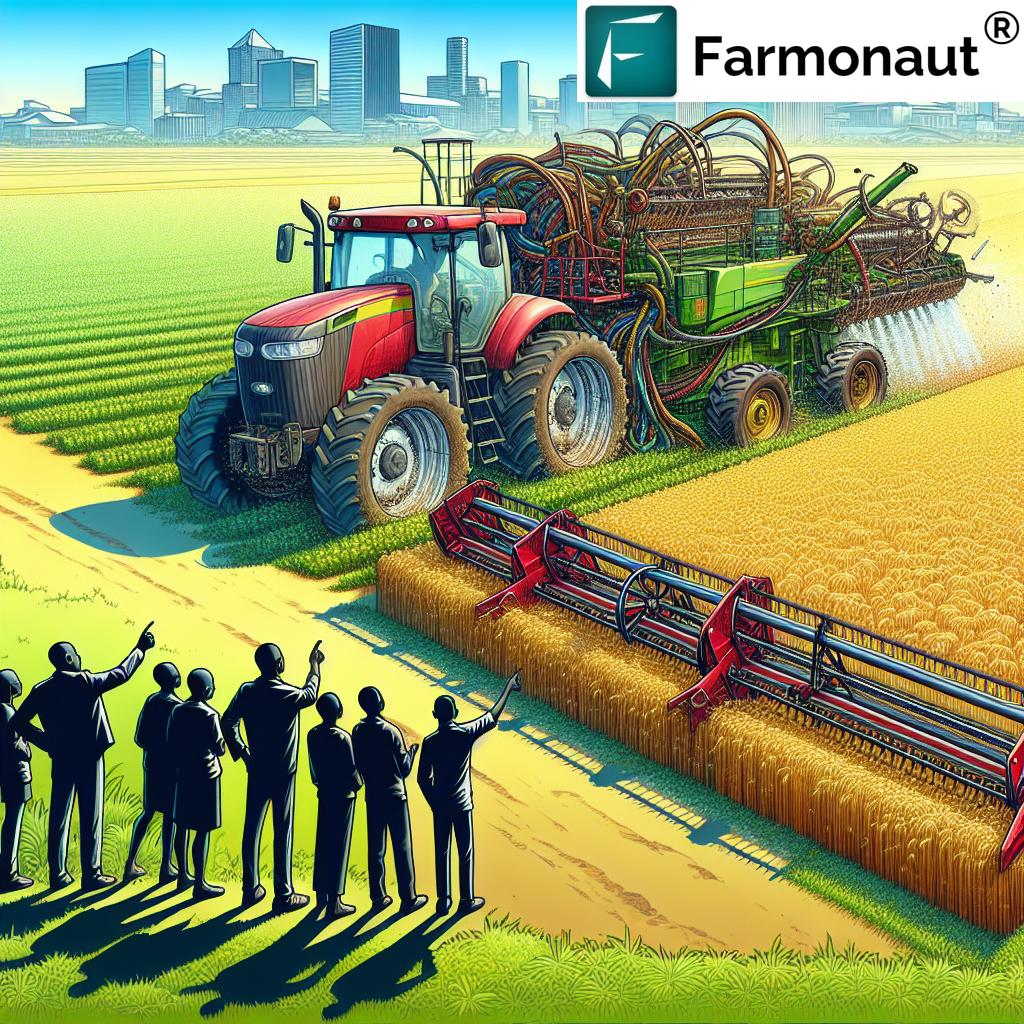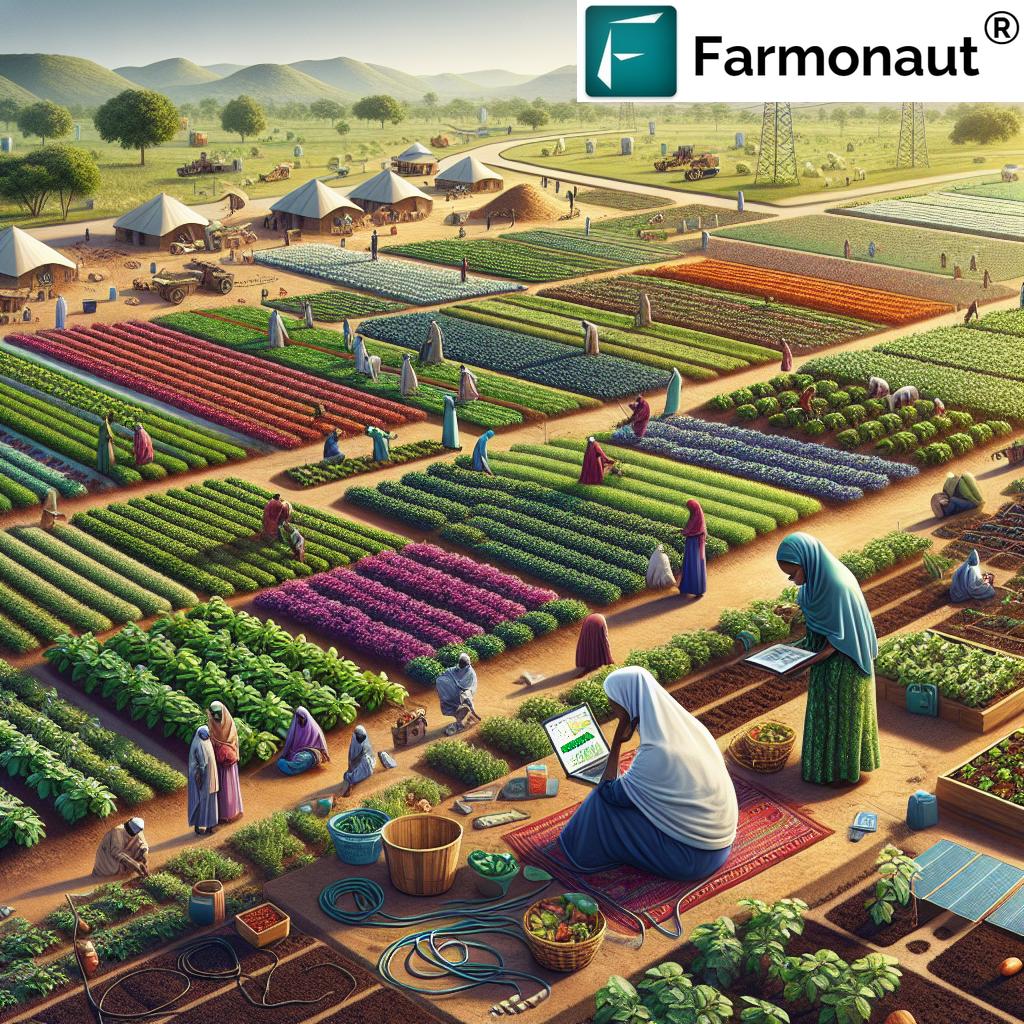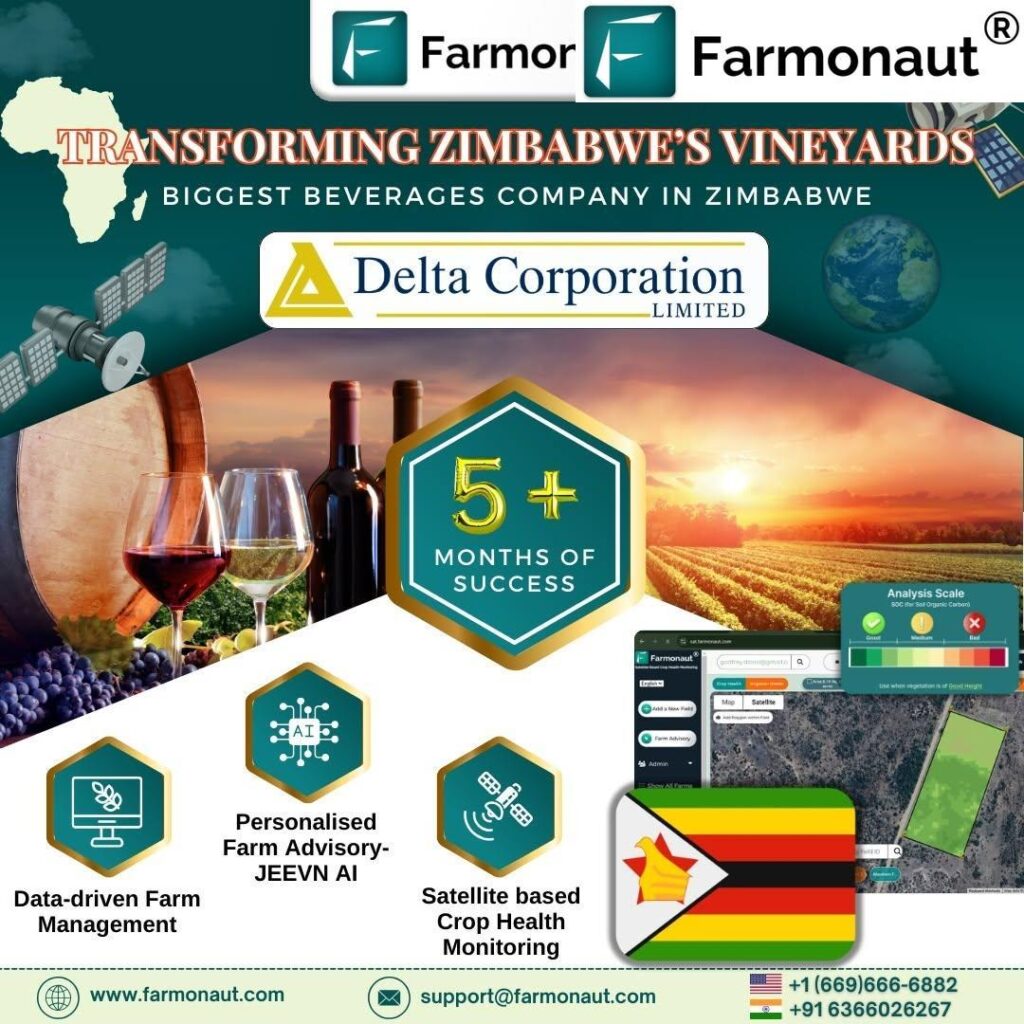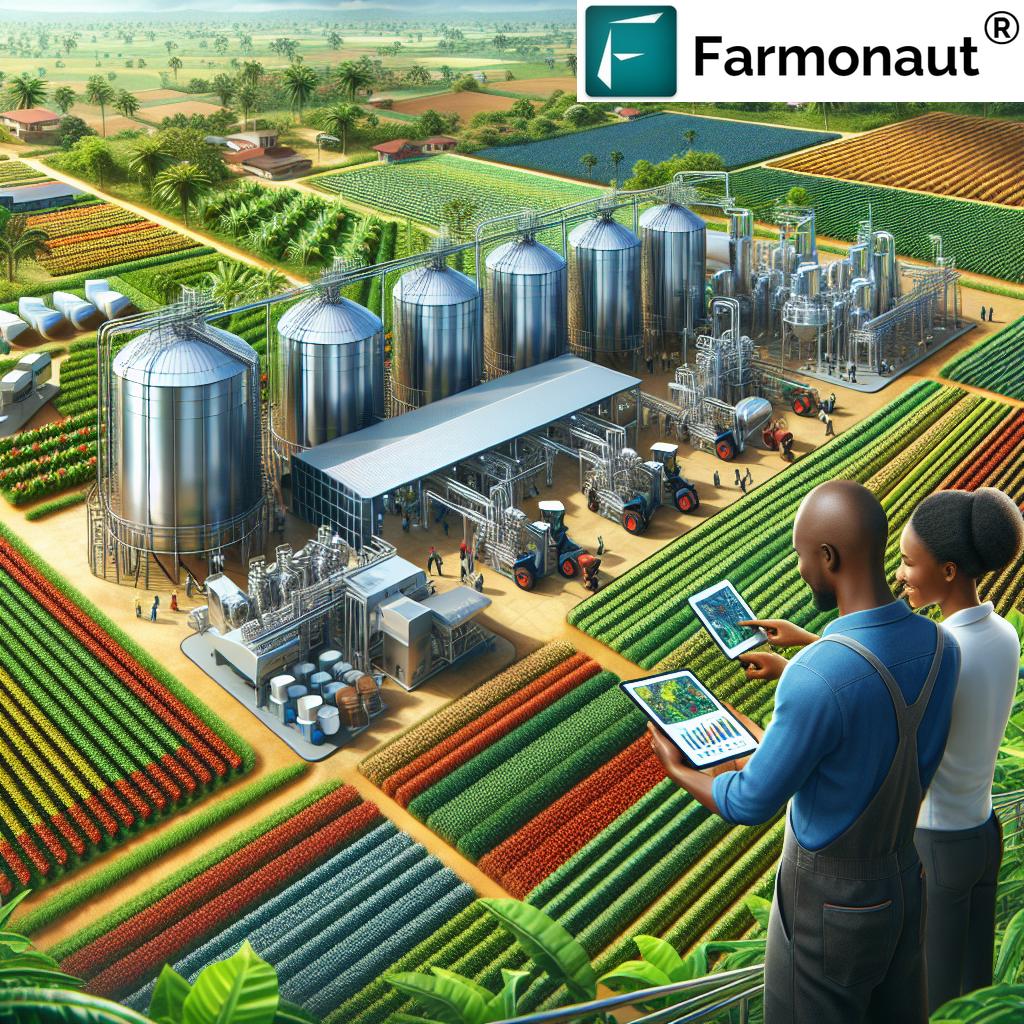“Over 40% of Kenya’s land is supported by agricultural grants promoting climate-resilient farming in 2024.”
Agriculture Grants 2024: Kenya Land & Farming Support
Agriculture remains the backbone of Kenya’s economy, providing livelihoods for over 70% of the population and contributing significantly to the nation’s GDP. However, the sector faces mounting challenges, including climate change, land degradation, tenure insecurity, and fluctuating market prices. As we head into 2024 and 2025, agriculture grants 2024 and targeted agricultural land grants have emerged as pivotal tools for transforming the sector and empowering Kenyan farmers.
This comprehensive guide explores the latest agricultural grants in Kenya 2025, land programs, and government initiatives that support sustainable farming, youth empowerment, and climate resilience. Whether you are a smallholder, a young entrepreneur, part of a farmer cooperative, or an agribusiness seeking to modernize your operations, understanding available grants and programs is essential. Let’s embark on a journey to secure the future of Kenya’s agriculture, ensuring food security, productivity, and sustainability for generations to come.
Understanding Agriculture Grants 2024: Empowering the Kenyan Farming Sector
Agriculture grants 2024 refer to financial assistance provided by government entities, international bodies, or non-governmental organizations to farmers, agribusinesses, cooperatives, and community groups. The purpose is to fund specific activities that drive the acquisition or improvement of land, adoption of modern technologies, sustainable farming practices, and overall sector development.
- Unlike loans, these grants do not require repayment, making them an attractive option for smallholder farmers and marginalized groups who often lack affordable credit.
- Grants can support a range of projects—improving irrigation systems, acquiring farm land, implementing soil conservation practices, and even funding climate-smart agriculture programs.
- They are a core component in transforming traditional farming into a more resilient, technology-driven, and sustainable industry.
Types of Agricultural Grants in Kenya
- Project-Based Grants: Funds for specific agricultural improvements, such as greenhouses, irrigation, or agro-processing.
- Land Grants: Financial or lease-based support to access or expand arable farmland, particularly for marginalized groups and youth.
- Climate-Resilience Grants: Targeted at adopting climate-smart solutions—from drought-resistant seeds to water harvesting and renewable energy integration.
- Capacity-Building & Training Grants: Empowering farmers with new technologies and best practices for improved productivity and environmental stewardship.
By understanding the landscape of agriculture grants 2024 and beyond, Kenyan farmers and agribusinesses can strategically plan for funding opportunities that promote sustainability, productivity, and an equitable future.
“Kenyan youth account for more than 30% of the applicants for sustainable agriculture grants in 2024.”
Agricultural Land Grants: Expanding Access and Security in Kenya
Agricultural land grants play a transformative role in the Kenyan agricultural sector. For decades, land access and tenure insecurity have been among the biggest constraints for Kenya’s farmers, especially youth and marginalized communities.
- The Kenyan government, through ministries such as the Ministry of Agriculture and Ministry of Lands, now offers various agricultural land grants and subsidized leases. These moves aim to address limited access and empower new entrants into commercial agriculture.
- These grants come attached with conditions such as using the land for sustainable and productive farming, with requirements to implement soil conservation, agroforestry, and water harvesting techniques.
- They directly tackle insecurity by granting formal leases or titles, reducing land conflicts, and boosting confidence for long-term agricultural investments.
Benefits of Land Grants in 2024–2025
- Enabling Commercial Expansion: Smallholders and youth groups can convert communal or underused land into productive, revenue-generating farms.
- Supporting Marginalized Groups: Specific grants are allocated for women and marginalized communities, encouraging broader participation in the sector.
- Promoting Climate Resilience: Many programs incentivize adopting sustainable irrigation, soil restoration, and agroforestry, directly addressing degradation and climate change challenges.
These land grants represent a significant form of support, gaining traction as part of national development strategies—and paving the way toward boosting productivity, food security, and sustainability in the years ahead.
Key Focus Areas of Agricultural Land Grants
- Expansion of Farmland: Supporting the expansion into idle or arable land for agricultural purposes.
- Soil Health and Conservation: Recipients are required to implement conservation practices, from cover cropping to building terraces and erosion control.
- Water Management: Grants often fund irrigation infrastructure, rainwater harvesting, and efficient water distribution systems.
- Agroforestry and Land Restoration: Funding the integration of trees and perennial plants with crop production to enhance ecosystem resilience.
Key Agricultural Grants and Programs in Kenya 2024–2025
The Kenyan government, international organizations, and county-level authorities have intensified efforts to support farmers with targeted grants in 2024 and 2025. These initiatives encourage adopting technologies, improving land access, addressing climate change, and building resilient agricultural systems. Let’s explore the suite of programs available:
1. Big Four Agenda Support Grants
-
Under the Big Four Agenda, the government prioritizes food security. Funds are allocated for:
- Irrigation infrastructures (solar pumps, drip lines, greenhouses)
- Output-value addition—helping farmers invest in agro-processing to reduce post-harvest losses
- High-quality inputs (improved seed varieties, fertilizers, pest control)
- Establishing community storage solutions
2. County Agricultural Grants
-
Managed at the local level by county governments, these agricultural grants match region-specific needs. Key features:
- Grants for youth and women groups, promoting entrepreneurship and access to land/resources
- Support for climate-smart agriculture—including conservation agriculture, soil fertility restoration, and drought resilience
- Infrastructure development, e.g., county agro-processing plants
- Capacity-building workshops and training programs
3. Climate Resilience Grants/Climate-Smart Agriculture Programs
-
Backed by global partners and climate resilience funds, these programs offer grants supporting:
- Adopting drought-tolerant crops and soil restoration techniques
- Integrating renewable energy solutions for farm operations (solar power, biogas)
- Water harvesting and efficient irrigation infrastructure
- Promotion of agroforestry and carbon farming for long-term environmental health
4. Youth and Women Empowerment Initiatives
- Specially tailored grants for youth and women address the key challenge of limited access to land, inputs, credit, and markets. Empowering the next generation ensures sector growth and innovation.
5. Agribusiness and Value Addition Support
- Grants aimed at transforming smallholder operations into commercial enterprises—facilitating investment in post-harvest handling, quality certifications, and market linkage platforms.
These agricultural grants in Kenya 2025 are shaping a new era of farming—one that is productive, resilient, and environmentally responsible.
Grants Comparison Table: Your 2024–2025 Options at a Glance
To help you navigate the best agricultural grants 2024 and agricultural land grants in Kenya, we’ve compiled a comparison table. Use this as a quick reference for key programs, eligibility, funding levels, and application details:
| Grant/Program Name | Eligibility Criteria | Grant Amount (Estimated KES/USD) | Application Deadline | Focus Area | Key Benefits | Application Link/Reference |
|---|---|---|---|---|---|---|
| Big Four Agenda Grants | All farmers, with priority on youth/women, cooperatives, agribusinesses | Up to KES 500,000–2,000,000 (approx. $4,000–$16,000) | Rolling (Annually) | Food security, irrigation, value addition | Modernization, improved yields, reduced post-harvest losses | Ministry of Agriculture Website |
| County Agricultural/Climate-Smart Grants | Local farmer groups, youth, women, community organizations | KES 50,000–1,000,000 (approx. $400–$8,000) | Varies by County (Quarterly/Annually) | Climate resilience, agro-processing, training | Capacity building, local climate adaptation support | County Government Links |
| National Land Leasing & Subsidy Programs | Young farmers, women, marginalized communities | Up to KES 3,000,000 ($24,000) for long-term development | Varies (Annually/Biennially) | Land access, expansion, restoration | Land security, tenure, sustainable use mandates | Ministry of Lands |
| Kenya Climate Smart Agriculture Project (KCSAP) | Smallholders, cooperatives, youth, community groups | KES 100,000+ ($800+) per project | Annual Calls | Climate resilience, irrigation, sustainable practices | Technical support, training, infrastructure | KCSAP Official Site |
| Youth Enterprise Development Fund (Agribusiness) | Youth (18–34 years), farmer groups | Up to KES 500,000 ($4,000) per group/project | Quarterly/Continous | Agri-enterprise, innovation | Seed capital, mentorship, market linkage | Youth Fund Portal |
| Women Enterprise Fund (WEF) | Women groups, female agripreneurs | Up to KES 500,000 ($4,000) per group | Rolling | Agri-business, land leasing, capacity building | Financial inclusion, sector entry support | WEF Official Portal |
| African Development Bank Sustainable Agriculture Grants | Farmer cooperatives, SMEs, agribusinesses, innovative projects | KES 1,000,000+ ($8,000+) per organization | Annual Rounds | Climate adaptation, value addition | Funding, training, technical partnership | AfDB Grants |
This table is for informational purposes; eligibility and deadlines may change. Check directly with program websites for the latest updates.
How to Access Agricultural Grants in Kenya: Step-by-Step Guide
Accessing agriculture grants 2024 and agricultural land grants involves diligent preparation, collaboration, and submission of compelling proposals. Here is a step-by-step process to maximize your chances:
- Identify Suitable Grants: Review eligibility, focus area (land, climate, youth empowerment), and application windows from the table above.
- Develop a Clear Project Proposal: Detail your project goals, sustainability measures, budget, and expected outcomes. Highlight innovative technologies you plan to implement for climate resilience or value addition.
- Engage Local Partners: Collaborate with local agricultural extension offices, county offices, and relevant NGOs for technical support and endorsement—these can strengthen your application.
- Submit Documentation: Include personal/group identification, land tenure documents (if applying for land grants), detailed proposals, and any required financial statements.
- Comply with Grant Conditions: Be ready to implement specified practices, such as soil conservation, agroforestry, or irrigation upgrades. You may undergo periodic monitoring and must report progress.
Tips for a Successful Grant Application
- Show Community Impact: Demonstrate how your project will improve local livelihoods, food security, and environmental sustainability.
- Emphasize Innovation: Incorporate plans for modern farming technologies, digital platforms, or smart water management.
- Respond to Sector Challenges: Address how your initiative tackles climate change, land degradation, or youth unemployment.
Impact & Outlook for 2025 and Beyond
As Kenya heads into 2025, the outreach and scale of agricultural grants is set to expand dramatically—propelled by the government’s focus on modernizing the sector and making agriculture a viable business for all. Here’s what the future holds:
- Empowering Youth and Women: With over 30% of applicants for sustainable agriculture grants now being youth, this demographic is poised to become the driving force in adopting new technologies and scaling up production.
- Building Climate Resilience: Grants will continue to promote the adoption of climate-smart solutions, ensuring Kenya’s agriculture sector is equipped to withstand the pressures of climate change, drought, and land degradation.
- Supporting Agribusiness Transformation: As smallholder farmers organize into cooperatives and formal agribusinesses, access to financial assistance for machinery, automation, and value addition will boost productivity and connect farmers with national and international markets.
- Enhancing Food Security: Every grant invested in soil conservation, irrigation, and crop quality takes Kenya a step closer to securing national food security for its fast-growing population.
The outcome is clear: agricultural grants provide direct solutions to the sector’s challenges and lay the groundwork for a sustainable, thriving future.
Farmonaut’s Role: Satellite Tech for Sustainable Agriculture Grants 2024 and Beyond
At Farmonaut, we are dedicated to empowering the agricultural sector in Kenya and worldwide by providing affordable satellite-driven insights and technology solutions. Here’s how our tools align with the priorities of agriculture grants 2024 and sustainable farming:
- Satellite-Based Crop and Land Monitoring: We offer real-time, multispectral satellite imagery to assess soil health, vegetation vigor (NDVI), and land use across farms. These solutions help grantees showcase sustainability, meet compliance, and optimize productivity—a requirement in many grant programs.
- AI-Driven Advisory: Our Jeevn AI analyzes satellite data to deliver hyper-local weather forecasts, crop advisory, and actionable recommendations for improving yields and mitigating climate risks, supporting the goals of climate resilience-focused grants.
- Blockchain-Based Traceability: With our traceability tools, Farmonaut Product Traceability, grant recipients can guarantee supply chain transparency, helping agribusinesses build consumer trust and comply with export standards—key for commercial grant programs.
- Fleet and Resource Management: For those expanding operations with grant support, our Farmonaut Fleet Management tools enable efficient vehicle/equipment usage and logistics optimization, reducing operational costs and improving project outcomes.
- Environmental Impact Monitoring: Grants often require proof of sustainable practices—our Carbon Footprinting Service empowers grantees to track, manage, and reduce their environmental impact in real time.
- Crop Loan & Insurance Verification: Access to affordable credit and risk mitigation is critical for grant-backed projects. With our satellite-based crop loan and insurance solutions, farmers and financial institutions benefit from fraud-resistant, data-verified processes.
- Large-Scale Farm Management: For agribusinesses scaling up with government grants, our large scale farm management platform provides comprehensive tools for planning, monitoring, and reporting—crucial for grant compliance and tracking outcomes.
With Farmonaut, we’re championing a sustainable, data-driven, and transparent future for Kenyan agriculture—meeting grant requirements with ease.
Frequently Asked Questions: Agriculture Grants 2024–2025 in Kenya
Who can apply for agricultural grants in Kenya in 2025?
Farmers of all scales, including youth, women, cooperatives, and agribusinesses, are eligible for a wide range of grants. Each program may have its own focus, with special attention often given to sustainable farming projects, marginalized communities, and innovation-driven agribusinesses.
Do agricultural grants require repayment?
No—unlike loans, agriculture grants 2024 do not require repayment. They are offered as direct financial assistance to boost productivity, implement technology, or expand farmland.
Are there grants specifically for youth and women in Kenya?
Yes. Specialized grants and enterprise funds are in place to empower youth and women, supporting access to land, credit, and capacity-building programs. These are critical for addressing unemployment and promoting equity in the agricultural sector.
How do I apply for a land grant?
Start by checking the Ministry of Lands, Ministry of Agriculture, and local county government websites. Prepare the required documents, clearly state your project’s scope, and ensure you can commit to sustainable land management practices.
How can Farmonaut help with managing a grant-funded farming project?
We provide affordable, real-time satellite monitoring, AI advisory, traceability, fleet management, and carbon tracking tools seamlessly through our web, Android, and iOS apps, aiding in compliant, productive, and sustainable project outcomes.
Conclusion: Paving The Way For Resilient Farming In Kenya
As we reflect on the pivotal role of agricultural grants 2024–2025 in Kenya, it becomes clear that this financial support is integral to transforming the sector. Through agricultural land grants, climate resilience funds, and targeted youth and women’s programs, Kenyan farmers are poised to overcome limitations of land access, build market-ready agribusinesses, and secure the nation’s food security.
The coming years will see continued intensified efforts by government bodies and NGOs—promoting sustainable farming, conservation, and climate-smart solutions capable of withstanding a changing environment.
By embracing these opportunities and leveraging advanced technologies, such as satellite monitoring and blockchain traceability from platforms like Farmonaut, the future of Kenya’s agriculture remains bright, productive, and sustainable—empowering generations of farmers and transforming rural livelihoods.
Agricultural Grants 2024–2025: Together, we are empowering Kenya’s farming future.














